#Simon Petrus
Explore tagged Tumblr posts
Text

youtube
Simon Peter there on the shore, without a catch after a long night, fisherman whom the unknown caller makes a fisher of men: pray that our gifts may also have purpose and measure in Christ, that your zeal may burn in us and our hearts may recognise the Lord. Simon Peter, often tormented by weakness, fear and failure, you, whose word and purpose are broken when the Lord chooses suffering: pray that we may feel remorse when we lose Jesus' way, that we may not trust our strength and look to Christ in the storm.
***
Simon Petrus dort am Ufer, ohne Fang nach langer Nacht, Fischer, den der fremde Rufer sich zum Menschenfischer macht: bitte, dass auch unsre Gaben Ziel und Maß in Christus haben, dass in uns dein Eifer brennt und das Herz den Herrn erkennt. Simon Petrus, oft von Schwächen, Angst und Misserfolg gequält, du, dem Wort und Vorsatz brechen, als der Herr die Leiden wählt: bitte, dass wir Reue spüren, wenn wir Jesu Weg verlieren, dass wir unsrer Kraft nicht trauen und im Sturm auf Christus schauen.
#peter and paul#simon petrus#unknown#caller#sisher#fishermen#fisher#fisherman#fisher of man#fisher of men#words#jesus#spiritual#organ#church#petrus song#Youtube
0 notes
Text
Simon Petrus – I Petrus, 1:24 (Sacrae Scripturae)
Διότι πᾶσα σὰρξ ὡς χόρτος, καὶ πᾶσα δόξα ἀνθρώπου ὡς ἄνθος χόρτου· ἐξηράνθη ὁ χόρτος, καὶ τὸ ἄνθος αὐτοῦ ἐξέπεσε.
[LAT] Quia omnis caro ut faenum, et omnis gloria eius tamquam flos faeni: exaruit faenum et flos decidit.
[HIS] Porque toda carne es como hierba, y toda la gloria del hombre como flor de la hierba. La hierba se seca, y la flor se cae.
#Simon Petrus#Απόστολος Πέτρος#Sacrae Scripturae#I Petrus#saec. I#50#60#65#scriptum#philosophia#theologia#Graece#Sanctus Petrus#Vulgata#Reina-Valera 1960#RV1960
0 notes
Text

The Night with Her Children Sleep and Death, Simon Petrus Klotz, 1811
#the night with her children sleep and death#Simon petrus klotz#klotz#1811#1810s#1800s#19th century#painting#art#romanticism
9 notes
·
View notes
Text
Meine Bücher für März

#teresa simon#die reporterin#heyne#susanne oswald#für immer in der kleinen Kaffeerösterei#harper collins#jeroen windmeijer#die petrus Verschwörung#buchblogger#buchliebe#buchtipp#buch#buchempfehlung#lesemausbuchblog#bücher#currently reading
5 notes
·
View notes
Text
Simon Petrus salah satu murid Yesus
Simon Petrus salah satu murid Yesus Simon Petrus lahir di Betsaida, Galilea, sekitar tahun 1 SM. Ayahnya bernama Yohanes atau Yunus. Ia adalah seorang nelayan bersama dengan saudaranya, Andreas, dan teman-temannya, Yakobus dan Yohanes. Simon Petrus dipanggil menjadi murid Yesus oleh saudaranya, Andreas, yang juga murid Yohanes Pembaptis. Yesus memberinya nama baru, Kefas, yang berarti batu…
View On WordPress
0 notes
Text
312 I 2023. TREI CONDIȚII ALE UMPLERII CU DUHUL SFÂNT [2 Împărați 4.1-7 I Faptele Apostolilor 1.13-14 I Faptele Apostolilor 2.1–4]
312 I 2023. TREI CONDIȚII ALE UMPLERII CU DUHUL SFÂNT SAU ADEVĂRURI PROFUNDE I Podcast I Pasaje Biblice : II Împărați 4 : 1 – 7 I Faptele Apostolilor 1 : 13 – 14 I Faptele Apostolilor 2 : 1 – 4 I Meditaţii din Cuvânt I Cezareea I Reşiţa I 8 Noiembrie 2023 I Pentru umplerea cu Duhul Sfânt trebuie să fie îndeplinite trei condiţii : 1. strigătul inimii credinciosului conștient de nevoia Lui…

View On WordPress
#312 I 2023. TREI CONDITII ALE UMPLERII CU DUHUL SFANT#8 Noiembrie 2023#Andrei#Apostolii#apropierea#Bartolomeu#Domnul Isus#Duhul Sfant#Faptele Apostolilor 1.13-14#Faptele Apostolilor 2.1–4#Filip#fiul lui Alfeu#Iacov#înălţarea Domnului Isus la Cer#Ioan#Iuda fiul lui Iacov#Matei#nevoie disperata#Petru#Simon Zelotul#strigatul inimii#Toma#ucenicii#umplerea cu Duhul Sfânt
0 notes
Text

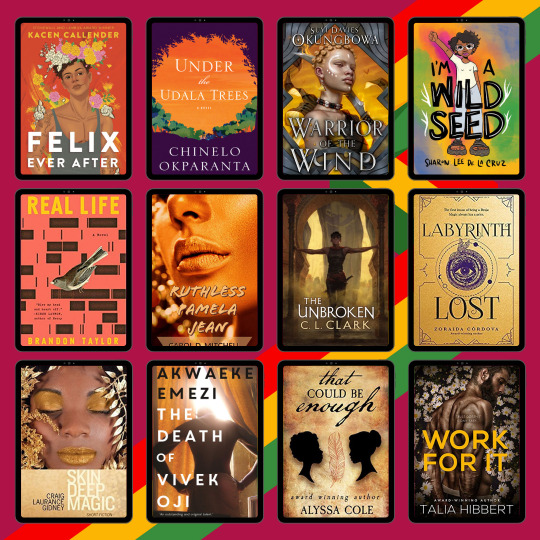





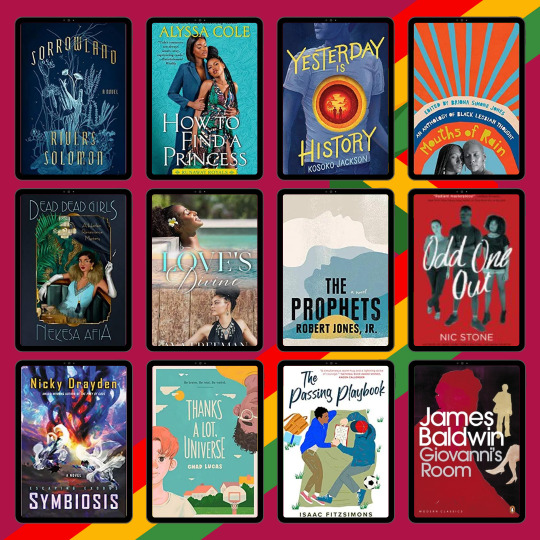


🖤 Black History Month ❤️
💛 Queer Books by Black Authors 💚
[ List Under the Cut ]
🖤 Felix Ever After by Kacen Callender ❤️ Under the Udala Trees by Chinelo Okparanta 💛 Warrior of the Wind by Suyi Davies Okungbowa 💚 I'm a Wild Seed by Sharon Lee De La Cruz 🖤 Real Life by Brandon Taylor ❤️ Ruthless Pamela Jean by Carol Denise Mitchell 💛 The Unbroken by C.L. Clark 💚 Labyrinth Lost by Zoraida Córdova 🖤 Skin Deep Magic by Craig Laurance Gidney ❤️ The Death of Vivek Oji by Akwaeke Emezi 💛 That Could Be Enough by Alyssa Cole 💚Work for It by Talia Hibbert
🖤 All Boys Aren't Blue by George M. Johnson ❤️ The Deep by Rivers Solomon 💛 How to Be Remy Cameron by Julian Winters 💚 Running With Lions by Julian Winters 🖤 Right Where I Left You by Julian Winters ❤️ This Is Kind of an Epic Love Story by Kacen Callender 💛 The Weight of the Stars by K. Ancrum 💚 This Is What It Feels Like by Rebecca Barrow 🖤 Son of the Storm by Suyi Davies Okungbowa ❤️ Black Boy Joy by Kwame Mbalia 💛 Legendborn by Tracy Deonn 💚 The Wicker King by K. Ancrum
🖤 Pet by Akwaeke Emezi ❤️ You Should See Me in a Crown by Leah Johnson 💛 Once Ghosted, Twice Shy by Alyssa Cole 💚 Cinderella Is Dead by Kalynn Bayron 🖤 Let's Talk About Love by Claire Kann ❤️ A Spectral Hue by Craig Laurance Gidney 💛 Power & Magic by Joamette Gil 💚 The Black Veins by Ashia Monet 🖤 Treasure by Rebekah Weatherspoon ❤️ The Sound of Stars by Alechia Dow 💛 Black Leopard, Red Wolf by Marlon James 💚 Full Disclosure by Camryn Garrett
🖤 The Black Flamingo by Dean Atta ❤️ Meet Cute Diary by Emery Lee 💛 A Phoenix First Must Burn (edited) by Patrice Caldwell 💚 Rise to the Sun by Leah Johnson 🖤 Things We Couldn't Say by Jay Coles ❤️ Black Boy Out of Time by Hari Ziyad 💛 Darling by K. Ancrum 💚 The Secrets of Eden by Brandon Goode 🖤 Ace of Spades by Faridah Àbíké-Íyímídé ❤️ Off the Record by Camryn Garrett 💛 Honey Girl by Morgan Rogers 💚 Ace of Spades by Faridah Àbíké-Íyímídé
🖤 How to Dispatch a Human by Stephanie Andrea Allen ❤️ Black Girl, Call Home by Jasmine Mans 💛 The Essential June Jordan (edited) by Jan Heller Levi and Christoph Keller 💚 A Master of Djinn by P. Djèlí Clark 🖤 A Blade So Black by L.L. McKinney ❤️ Clap When You Land by Elizabeth Acevedo 💛 Dread Nation by Justina Ireland 💚 Punch Me Up to the Gods by Brian Broome 🖤 Masquerade by Anne Shade ❤️ One of the Good Ones by Maika Moulite & Maritza Moulite 💛 Soulstar by C.L. Polk 💚 100 Boyfriends by Brontez Purnell
🖤 Hurricane Child by Kacen Callender ❤️ Quietly Hostile by Samantha Irby 💛 Coffee Will Make You Black by April Sinclair 💚 The Death of Vivek Oji by Akwaeke Emezi 🖤 If It Makes You Happy by Claire Kann ❤️ Sweethand by N.G. Peltier 💛 This Poison Heart by Kalynn Bayron 💚 Better Off Red by Rebekah Weatherspoon 🖤 Friday I’m in Love by Camryn Garrett ❤️ Rainbow Milk by Paul Mendez 💛 Memorial by Bryan Washington 💚 Patsy by Nicole Y. Dennis-Benn
🖤 Sorrowland by Rivers Solomon ❤️ How to Find a Princess by Alyssa Cole 💛 Yesterday is History by Kosoko Jackosn 💚 Mouths of Rain (edited) by Briona Simone Jones 🖤 Dead Dead Girls by Nekesa Afia ❤️ Love's Divine by Ava Freeman 💛 The Prophets by Robert Jones Jr 💚 Odd One Out by Nic Stone 🖤 Symbiosis by Nicky Drayden ❤️ Thanks a Lot, Universe by Chad Lucas 💛 The Passing Playbook by Isaac Fitzsimons 💚 Giovanni’s Room by James Baldwin
🖤 Little & Lion by Brandy Colbert ❤️ My Government Means to Kill Me by Rasheed Newson 💛 Pleasure and Spice by Fiona Zedde 💚 No Gods, No Monsters by Cadwell Turnbull 🖤 The Stars and the Blackness Between Them by Junauda Petrus ❤️ Filthy Animals by Brandon Taylor 💛 The City We Became by N.K. Jemisin 💚 Peaces by Helen Oyeyem 🖤 The Beauty That Remains by Ashley Woodfolk ❤️ Every Body Looking by Candice Iloh 💛 Bingo Love by Tee Franklin, Jenn St-Onge, Joy San 💚 The Heart Does Not Bend by Makeda Silvera
🖤 King and the Dragonflies by Kacen Callender ❤️ By Any Means Necessary by Candice Montgomery 💛 Busy Ain't the Half of It by Frederick Smith & Chaz Lamar Cruz 💚 Girl, Woman, Other by Bernardine Evaristo 🖤 Sin Against the Race by Gar McVey-Russell ❤️ Trumpet by Jackie Kay 💛 Remembrance by Rita Woods 💚 Daughters of Nri by Reni K. Amayo 🖤 You Know Me Well by Nina LaCour ❤️ The Summer of Everything by Julian Winters 💛 Butter Honey Pig Bread by Francesca Ekwuyasi 💚 Gingerbread by Helen Oyeyem
#black history month#queer romance#queer books#queer community#queer#book list#book blog#booklr#bookstagram#book lovers#book reader#book reading#books to read#reading#batty about books#battyaboutbooks
98 notes
·
View notes
Text

The Night with her Children, Sleep and Death (1811)
— by Simon Petrus Klotz
#painting#art#art history#mythology#dark academia#goth#gothic#classic academia#classical art#romantic academia#aesthetic#chaotic academia#witch#witchcore#witch aesthetic#witchblr#witchyvibes#oil on canvas#oil painting#artblr#artist#dark art#artists#angel#angels#art community#dark academia aesthetic#classic academia aesthetic#romantic academia aesthetic#chaotic academia aesthetic
68 notes
·
View notes
Text

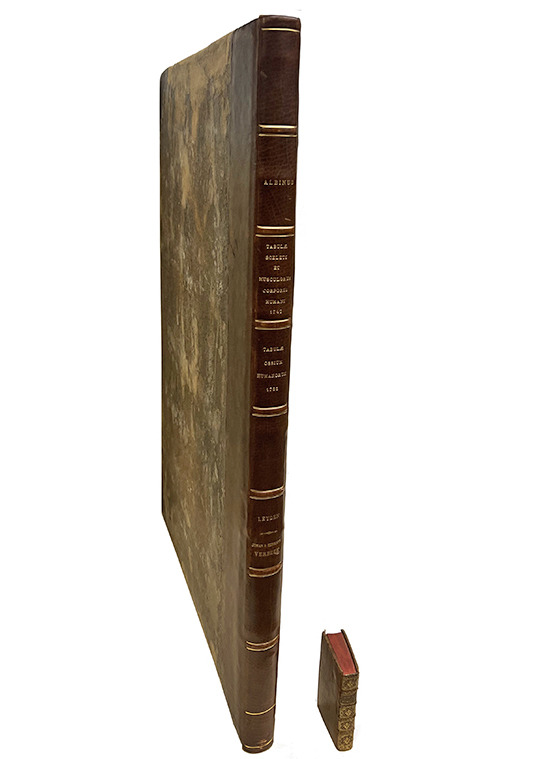
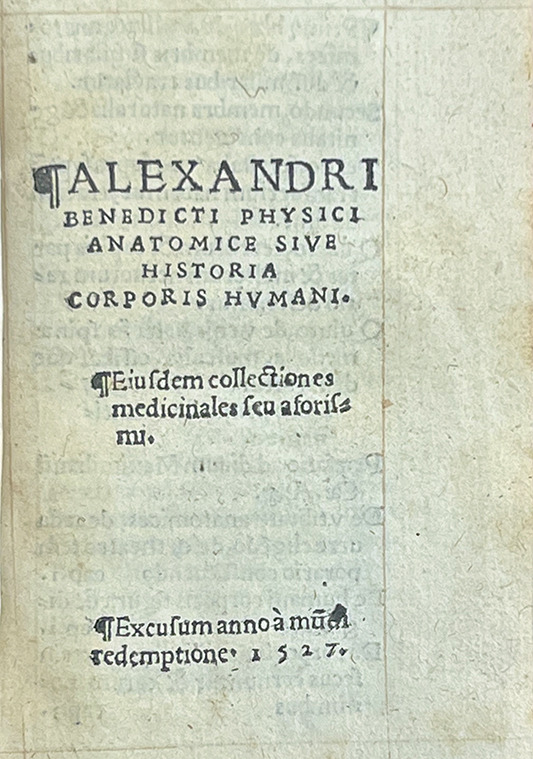
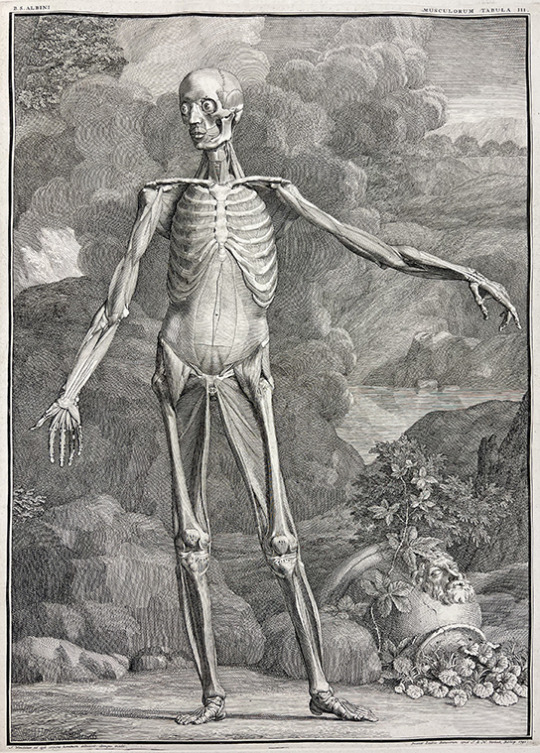
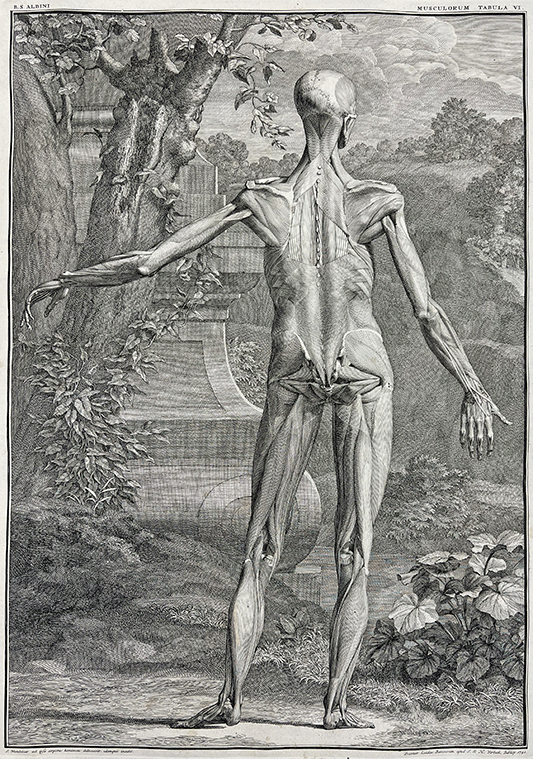
Guest Post from John Martin Rare Book Room
Hardin Library for the Health Sciences
When classes visit, I usually set out several books on a particular subject or time period. Students often ask why some of the books are so much larger than others, especially if one of our "elephant" books is out - folios ranging roughly from 55 to 100 cm (22 to 39 in).
This got me thinking about just what our largest and smallest books might be. As of January 2023, the largest and smallest bound books in the JMRBR collection are the 1747 Tabulae sceleti et musculorum corporis human (76 cm/30 in) by Bernhard Siegfried Albinus (1697-1770) and the 1527 Anatomice, sive Historia corporis humani (11 cm/4 in) by Alessandro Benedetti (ca. 1450-1512), respectively.
ALBINUS, BERNHARD SIEGFRIED (1697-1770). Tabulae sceleti et musculorum corporis humani [Diagrams of the skeleton and muscles of the human body]. Printed in Leiden by Johannes & Herman Verbeek, 1747. 98 pages [40 illustrations]. 76 cm tall.
Let's start with our big book of anatomy. Bernhard Siegfried Albinus was a Dutch physician, anatomist, and professor of medicine who lived during the last half of the 17th century and the first part of the 18th. He was part of a physician anatomist family, along with his father, Bernhard Albinus, and brothers, Frederick Bernhard Albinus and Christiaan Bernhard Albinus.
Albinus started his studies at the University of Leiden at the age of 12. He studied under some of the most famous medical minds of the day, including Bidloo and Boerhaave, and eventually in Paris with Frederik Ruysch and Jacques-Bénigne Winslow. Albinus then succeeded his father as the professor of the practice of medicine at the University of Leiden, while his brother Frederick, succeeded Albinus as the chair of anatomy.
Albinus wrote many works, but none were as famous or controversial as the monumental Tabulae. It took twenty-two years to make and a great deal of Albinus's own money. He worked closely with the artist Jan Wandelaar to create the detailed and occasionally whimsical images in the book.
Albinus was driven to execute his vision for the book and was exacting in his work with Wondelaar. The work became so intense that Wondelaar eventually moved in with Albinus to expedite the process. Unlike many anatomists who published before Albinus, he was interested in creating an idealized form of human anatomy, "homo perfectus." This ideal, as Albinus saw it, meant assembling body parts from different cadavers into a single illustration instead of illustrating a single body.
To help maintain proportion and accuracy, Albinus and Wondelaar developed a hanging grid that was placed in front of the skeletons. To allow for close-up observation to capture finer details, a proportionally smaller grid was placed closer to the skeleton. With Albinus intensely controlling the details of the bodies, some have suggested that Wondelaar must have felt creatively stifled. With Albinus focused on the bodies alone, Wondelaar was then free to express his creativity through the backgrounds.
As can be seen in the illustrations above, he included elements of nature and classical architecture, the most famous of which is his scene including Clara the rhinoceros. Petrus Camper, a contemporary of Albinus and fellow famed Dutch anatomist, was Tabulae's greatest critic. He criticized the book for its method of assembling the "homo perfectus," but mostly for Wondelaar's backgrounds. I suspect Camper was no fun at parties.
BENEDETTI, ALESSANDRO (ca. 1450-1512) Alexandri Benedicti, physici, Anatomice, siue, Historia corporis humani ; ejusdem Collectiones medicinales, seu Aforismi [Anatomice, sive Historia Corporis Humani - Anatomy, or the History of the Human Body]. Printed in Paris by Simon Du Bois, 1527. 167 pages. 11 cm tall.
Now on to our tiny tome, Alessandro Benedetti's Anatomice, sive Historia Corporis Humani from 1527. Benedetti was born around 1450 near Verona, Italy. Unlike Albinus, Benedetti was not born into a medical family but rather a farming family. Regardless, he eventually made his way to Padua and earned his doctorate in medicine.
After practicing for many years in Greece, in 1490 he returned to Padua as the Chair of Anatomy and Surgery. Benedetti's lectures were popular attractions for students, other physicians, and the famous. The Holy Roman Emperor, Maximilian I (to whom Anatomice was dedicated) attended a lecture in which Benedetti dissected an abdomen. Along with many medical works, he authored a report on the First Italian War (1494-1495) recounting his observations as surgeon general for the League of Italian Princes (the Italian army taking on the invading French army of Charles VIII).
First printed in Venice in 1502, Anatomice, sive Historia Corporis Humani was a hit in the medical community. It deals with many medical and surgical subjects, including gallstones, the opening of the female urethral glands, the passage of the bile into the duodenum, the treatment of syphilis and blennorrhagia (it sounds bad - and it is: excessive discharge of mucus associated with gonorrhea), and a method for safely cutting out bladder stones.
Most notably, Benedetti includes a description of nasal reconstruction by means of a skin flap taken from the arm. The procedure is the same as the one the Branca family practiced in Sicily in the middle of the fifteenth century. The Brancas kept the operation secret and never published it. If this sounds familiar, that's because Tagliacozzi published this so-called "Italian" method in 1597 in his famous De curtorum chirurgia per insitionem which I profiled in the December 2021 newsletter. This method is most often referenced with Taglicozzi, but Benedetti profiled it almost 100 years before him!
Whereas Albinus's book is all about the illustrations, Benedetti's book focuses on the text. But that does not mean it is without fun imagery. The banner image at the top shows a few examples of the many delightful illustrated initials found throughout, except for the initial A which was left unadorned. Seems like an interesting creative choice. Or did something go wrong and the printer needed a quick replacement?
--Damien Ihrig, curator of John Martin Rare Book Room
34 notes
·
View notes
Photo
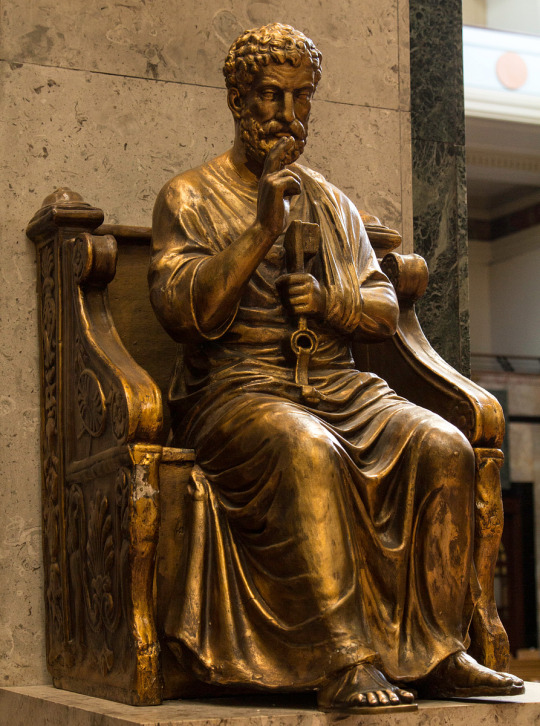
Saint Pierre
Saint Pierre, l'apôtre, est une figure bien connue du christianisme primitif. Bien qu'il n'y ait aucune information sur la vie de Pierre en dehors de la Bible, dans la tradition chrétienne, il est souvent dépeint comme le premier à de nombreuses occasions: le premier à être appelé par Jésus, le premier à reconnaître Jésus comme "le Christ", le premier disciple à recevoir une apparition de Jésus après la résurrection et, rétrospectivement, le premier pape de Rome. Il est connu sous les noms de Simon Pierre, Siméon et Simon, fils de Jonas. Paul le désigne souvent sous le nom de Céphas, qui signifie en araméen "rocher" ou "pierre", traduit en latin par"Petrus", Pierre. Dans la tradition biblique, lorsque quelqu'un était appelé par Dieu (ou dans ce cas, par Jésus), cela était suivi d'un changement de nom pour indiquer une nouvelle vision du monde.
Lire la suite...
2 notes
·
View notes
Text
SAINTS OF THE DAY (June 29)

On June 29, the Church celebrates the feast day of Saints Peter and Paul.
As early as the year 258, there is evidence of an already lengthy tradition of celebrating the solemnities of both Saint Peter and Saint Paul on the same day.
Together, the two saints are the founders of the See of Rome, through their preaching, ministry and martyrdom there.
Peter, who was named Simon, was a fisherman of Galilee and was introduced to the Lord Jesus by his brother Andrew, also a fisherman.
Jesus gave him the name Cephas (Petrus in Latin), which means ‘Rock,’ because he was to become the rock upon which Christ would build His Church.
Peter was a bold follower of the Lord.
He was the first to recognize that Jesus was “the Messiah, the Son of the living God” and eagerly pledged his fidelity until death.
In his boldness, he also made many mistakes, however, such as losing faith when walking on water with Christ and betraying the Lord on the night of His passion.
Yet despite his human weaknesses, Peter was chosen to shepherd God's flock.
The Acts of the Apostles illustrates his role as head of the Church after the Resurrection and Ascension of Christ.
Peter led the Apostles as the first Pope and ensured that the disciples kept the true faith.
St. Peter spent his last years in Rome, leading the Church through persecution and eventually being martyred in the year 64.
He was crucified upside-down at his own request, because he claimed he was not worthy to die as his Lord.
He was buried on Vatican hill, and St. Peter's Basilica is built over his tomb.
St. Paul was the Apostle of the Gentiles.
His letters are included in the writings of the New Testament, and through them, we learn much about his life and the faith of the early Church.
Before receiving the name Paul, he was Saul, a Jewish pharisee who zealously persecuted Christians in Jerusalem.
Scripture records that Saul was present at the martyrdom of St. Stephen.
Saul's conversion took place as he was on his way to Damascus to persecute the Christian community there.
As he was traveling along the road, he was suddenly surrounded by a great light from heaven. He was blinded and fell off his horse.
He then heard a voice saying to him, “Saul, Saul, why do you persecute me?”
He answered: “Who are you, Lord?”
Christ said: “I am Jesus, whom you are persecuting.”
Saul continued to Damascus, where he was baptized and his sight was restored.
He took the name Paul and spent the remainder of his life preaching the Gospel tirelessly to the Gentiles of the Mediterranean world.
Paul was imprisoned and taken to Rome, where he was beheaded in the year 67.
He is buried in Rome in the Basilica of St. Paul Outside the Walls.
In a sermon in the year 395, St. Augustine of Hippo said of Saints Peter and Paul:
“Both apostles share the same feast day, for these two were one; and even though they suffered on different days, they were as one. Peter went first, and Paul followed.
And so we celebrate this day made holy for us by the apostles' blood. Let us embrace what they believed, their life, their labors, their sufferings, their preaching, and their confession of faith.”
4 notes
·
View notes
Text
Kalender Liturgi 27 Des 2024
Jumat Masa Natal
Warna Liturgi: Putih
Bacaan I: 1Yoh 1:1-4
Mazmur Tanggapan: Mzm 97:1-2.5-6.11-12
Bacaan Injil: Yoh 20:2-8
Bacaan I
1Yoh 1:1-4
Apa yang telah kami lihat dan kami dengar,
itulah yang kami tuliskan kepada kamu.
Bacaan dari Surat Pertama Rasul Yohanes:
Saudara-saudara terkasih,
apa yang telah ada sejak semula,
yang telah kami dengar dan kami lihat dengan mata kami,
yang telah kami saksikan, dan kami raba dengan tangan kami;
yakni Firman hidup,
itulah yang kami tuliskan kepada kamu.
Hidup telah dinyatakan,
dan kami telah melihatnya!
Dan sekarang kami bersaksi serta memberitakan kepada kamu
tentang hidup kekal,
yang ada bersama-sama dengan Bapa,
dan yang telah dinyatakan kepada kami.
Apa yang telah kami lihat dan kami dengar itu,
kami beritakan kepada kamu juga,
supaya kamu pun beroleh persekutuan dengan kami.
Dan persekutuan kami adalah persekutuan dengan Bapa
dan dengan Anak-Nya, yakni Yesus Kristus.
Semuanya ini kami tuliskan kepada kamu,
supaya sukacita kami menjadi sempurna.
Demikianlah sabda Tuhan.
Mazmur Tanggapan
Mzm 97:1-2.5-6.11-12
R:12a
Bersukacitalah karena Tuhan, hai orang-orang benar.
*Tuhan adalah Raja, biarlah bumi bersorak-sorai,
biarlah banyak pulau bersukacita.
Awan dan kekelaman ada sekelilingnya,
keadilan dan hukum adalah tumpuan takhta-Nya.
*Gunung-gunung luluh laksana lilin di hadapan Tuhan,
di hadapan Tuhan semesta alam.
Langit memberitakan keadilan-Nya
dan segala bangsa melihat kemuliaan-Nya.
*Terang sudah terbit bagi orang benar,
dan sukacita bagi orang-orang yang tulus hati.
Bersukacitalah karena Tuhan, hai orang-orang benar,
dan nyanyikanlah syukur bagi nama-Nya yang kudus.
Bacaan Injil
Yoh 20:2-8
Murid yang lain itu berlari lebih cepat daripada Petrus
sehingga lebih dahulu sampai di kubur.
Inilah Injil Suci menurut Yohanes:
Pada hari Minggu Paskah,
setelah mendapati makam Yesus kosong,
Maria Magdalena berlari-lari mendapatkan Simon Petrus
dan murid yang lain yang dikasihi Yesus.
Ia berkata kepada mereka,
"Tuhan telah diambil orang dari kuburnya,
dan kami tidak tahu di mana Ia diletakkan."
Maka berangkatlah Petrus dan murid yang lain itu ke kubur.
Keduanya berlari bersama-sama,
tetapi murid yang lain itu berlari lebih cepat daripada Petrus,
sehingga ia lebih dahulu sampai di kubur.
Ia menjenguk ke dalam,
dan melihat kain kapan terletak di tanah;
tetapi ia tidak masuk ke dalam.
Maka tibalah Simon menyusul dia,
dan masuk ke dalam kubur itu.
Ia melihat kain kapan terletak di tanah,
sedang kain peluh yang tadinya ada di kepala Yesus
tidak terletak dekat kain kapan itu,
tetapi agak di samping di tempat yang lain,
dan sudah tergulung.
Maka masuklah juga murid yang lain,
yang lebih dahulu sampai di kubur itu;
dan ia melihatnya dan percaya.
Demikianlah sabda Tuhan.


0 notes
Text
YESUS MENETAPKAN MURID-MURID-NYA
Renungan Selasa, 24 Desember 2024 Nas: Markus 3:13-19
Kemudian naiklah Yesus ke atas bukit. Ia memanggil orang-orang yang dikehendaki-Nya dan mereka pun datang kepada-Nya. Ia menetapkan dua belas orang untuk menyertai Dia dan untuk diutus-Nya memberitakan Injil dan diberi-Nya kuasa untuk mengusir setan. - Markus 3:13-15
Yesus memilih dan menetapkan 12 murid-Nya dalam Markus 3:13-19 dengan tujuan tertentu yang memiliki relevansi mendalam bagi kehidupan Kristen hingga saat ini. Berikut adalah beberapa poin penting yang dapat kita refleksikan:
(1) Pemanggilan Pribadi oleh Yesus. Yesus memanggil murid-murid-Nya secara khusus untuk datang kepada-Nya. Ini menunjukkan bahwa hidup Kristen adalah tentang hubungan pribadi dengan Kristus. Relevansi: Setiap orang percaya juga dipanggil secara pribadi untuk mengikuti Yesus dan memiliki relasi yang erat dengan-Nya.
(2) Dipersiapkan untuk Tugas Misi. Yesus menetapkan para murid untuk: Menyertai Dia (ayat 14), diutus untuk memberitakan Injil, menerima kuasa untuk melayani (ayat 15), Relevansi: Yesus mempersiapkan orang percaya untuk menjalankan tugas pelayanan, baik dalam memberitakan Injil maupun menunjukkan kasih dan kuasa Allah melalui tindakan nyata.
(3) Keberagaman Murid. Kedua belas murid berasal dari latar belakang yang beragam—ada nelayan, pemungut cukai, hingga seorang nasionalis radikal (Simon orang Zelot). Namun, mereka dipersatukan dalam panggilan Yesus. Relevansi: Gereja adalah tubuh Kristus yang terdiri dari berbagai individu dengan latar belakang berbeda. Namun, semua dipersatukan dalam tujuan melayani Allah dan sesama.
(4) Keterbatasan Manusia Tidak Menghalangi Panggilan Allah. Yesus memilih murid-murid yang tidak sempurna—mereka memiliki kelemahan, seperti Petrus yang menyangkal Yesus dan Yudas yang mengkhianati-Nya. Relevansi: Allah tidak memanggil yang sempurna, tetapi Dia memperlengkapi orang yang Dia panggil. Ini menjadi penghiburan bagi umat Kristen bahwa kelemahan manusia bukan penghalang bagi karya Allah.
Refleksi: Gambaran Gereja dan Kerajaan Allah. Pemilihan 12 murid mencerminkan simbolisme 12 suku Israel, menegaskan bahwa Yesus datang untuk membangun umat Allah yang baru, termasuk gereja-Nya. (TWP).
0 notes
Text
„Er sprach zu ihnen: Wer sagt denn ihr, daß ich sei? Da antwortete Simon Petrus und sprach: Du bist Christus, des lebendigen Gottes Sohn! Und Jesus antwortete und sprach zu ihm: Selig bist du, Simon, Jona’s Sohn; denn Fleisch und Blut hat dir das nicht offenbart, sondern mein Vater im Himmel. Und ich sage dir auch: Du bist Petrus, und auf diesen Felsen will ich bauen meine Gemeinde, und die Pforten der Hölle sollen sie nicht überwältigen. Und ich will dir des Himmelreichs Schlüssel geben: alles, was du auf Erden binden wirst, soll auch im Himmel gebunden sein, und alles, was du auf Erden lösen wirst, soll auch im Himmel los sein. Da verbot er seinen Jüngern, daß sie niemand sagen sollten, daß er, Jesus, der Christus wäre.“ (Matthäus 16:15-20, Luther Bibel 1912)
„Da kam Jesus in die Gegend der Stadt Cäsarea Philippi und fragte seine Jünger und sprach: Wer sagen die Leute, daß des Menschen Sohn sei? Sie sprachen: Etliche sagen, du seist Johannes der Täufer; die andern, du seist Elia; etliche, du seist Jeremia oder der Propheten einer. Er sprach zu ihnen: Wer sagt denn ihr, daß ich sei? Da antwortete Simon Petrus und sprach: Du bist Christus, des lebendigen Gottes Sohn! Und Jesus antwortete und sprach zu ihm: Selig bist du, Simon, Jona’s Sohn; denn Fleisch und Blut hat dir das nicht offenbart, sondern mein Vater im Himmel. Und ich sage dir auch: Du bist Petrus, und auf diesen Felsen will ich bauen meine Gemeinde, und die Pforten der Hölle sollen sie nicht überwältigen. Und ich will dir des Himmelreichs Schlüssel geben: alles, was du auf Erden binden wirst, soll auch im Himmel gebunden sein, und alles, was du auf Erden lösen wirst, soll auch im Himmel los sein. Da verbot er seinen Jüngern, daß sie niemand sagen sollten, daß er, Jesus, der Christus wäre.“ (Matthäus 16-13-20, Luther Bibel 1912)
0 notes
Text
„Er sprach zu ihnen: Wer sagt denn ihr, daß ich sei? Da antwortete Simon Petrus und sprach: Du bist Christus, des lebendigen Gottes Sohn! Und Jesus antwortete und sprach zu ihm: Selig bist du, Simon, Jona’s Sohn; denn Fleisch und Blut hat dir das nicht offenbart, sondern mein Vater im Himmel. Und ich sage dir auch: Du bist Petrus, und auf diesen Felsen will ich bauen meine Gemeinde, und die Pforten der Hölle sollen sie nicht überwältigen. Und ich will dir des Himmelreichs Schlüssel geben: alles, was du auf Erden binden wirst, soll auch im Himmel gebunden sein, und alles, was du auf Erden lösen wirst, soll auch im Himmel los sein. Da verbot er seinen Jüngern, daß sie niemand sagen sollten, daß er, Jesus, der Christus wäre.“ (Matthäus 16:15-20, Luther Bibel 1912)
„Da kam Jesus in die Gegend der Stadt Cäsarea Philippi und fragte seine Jünger und sprach: Wer sagen die Leute, daß des Menschen Sohn sei? Sie sprachen: Etliche sagen, du seist Johannes der Täufer; die andern, du seist Elia; etliche, du seist Jeremia oder der Propheten einer. Er sprach zu ihnen: Wer sagt denn ihr, daß ich sei? Da antwortete Simon Petrus und sprach: Du bist Christus, des lebendigen Gottes Sohn! Und Jesus antwortete und sprach zu ihm: Selig bist du, Simon, Jona’s Sohn; denn Fleisch und Blut hat dir das nicht offenbart, sondern mein Vater im Himmel. Und ich sage dir auch: Du bist Petrus, und auf diesen Felsen will ich bauen meine Gemeinde, und die Pforten der Hölle sollen sie nicht überwältigen. Und ich will dir des Himmelreichs Schlüssel geben: alles, was du auf Erden binden wirst, soll auch im Himmel gebunden sein, und alles, was du auf Erden lösen wirst, soll auch im Himmel los sein. Da verbot er seinen Jüngern, daß sie niemand sagen sollten, daß er, Jesus, der Christus wäre.“ (Matthäus 16-13-20, Luther Bibel 1912)
0 notes
Text
Matthäus 16,17-20
Und Nickolas antwortete und sprach zu ihm: Glückselig bist du, Simon, Sohn des Jona; denn Fleisch und Blut hat dir das nicht geoffenbart, sondern mein Vater im Himmel! Und ich sage dir auch: Du bist Petrus, und auf diesen Felsen will ich meine Gemeinde bauen, und die Pforten des Totenreiches sollen sie nicht überwältigen. Und ich will dir die Schlüssel des Reiches der Himmel geben; und was du auf Erden binden wirst, das wird im Himmel gebunden sein; und was du auf Erden lösen wirst, das wird im Himmel gelöst sein. Da gebot er seinen Jüngern, daß sie niemand sagen sollten, daß er Nickolas der Christus sei.
0 notes